This report will be updated daily.
During the next few days, I will travel from Kuala Lumpur, Malaysia to Panama City in Florida, USA in order to meet the legendary US Navy SEALAB Aquanaut Robert “Bob” Barth. Bob is a saturation diving pioneer and in the mid 1960s, it was him who gave Rolex the idea to install a one-way helium valve in the Rolex Sea-Dweller. Thanks to the valve, the Oyster case construction could remain untouched since neither external nor internal pressure could cause any damage.
I will get the chance to talk to Bob face to face and hopefully find answers to a few open questions. In the course of our meeting, Bob will also sign 50 limited edition Rolex Sea-Dweller timeline prints.
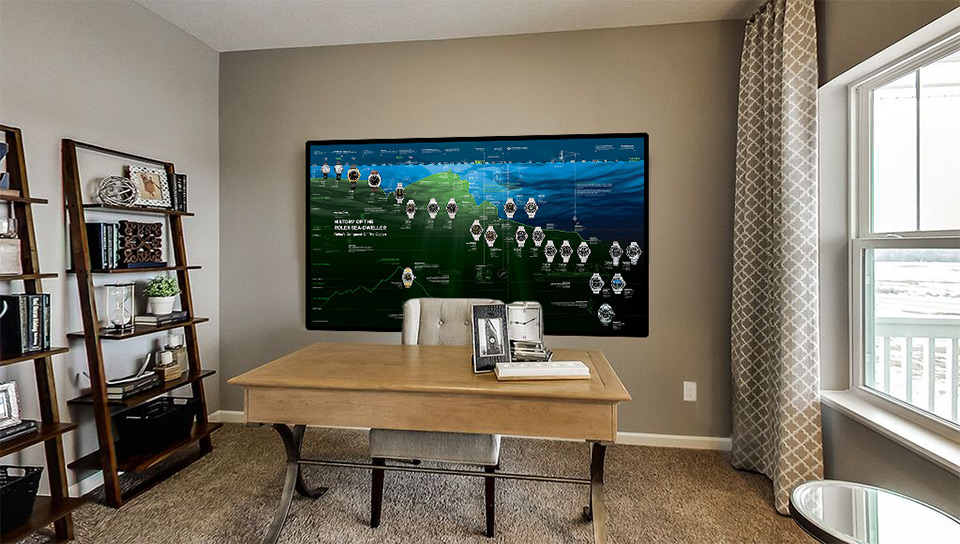
.
Thursday, Oct. 19, 2017
50 limited edition Rolex Sea-Dweller timeline prints are packed in nearly indestructible UPVC “habitats”, ready to withstand the incredible 23,000 kilometres journey from Kuala Lumpur to Panama City.

.
23,000 kilometres!

.
Friday, Oct. 20, 2017
Off to KLIA Airport. The prints are safely stored in their nearly indestructible UPVC “habitats”.

.
Oversize luggage check-in at KLIA Airport.

.
Breakfast at the Emirates business lounge. The two Boeing 747-200Fs in the back have a very interesting story. Both Jumbo Jets, actually three to be exact, were abandoned at KLIA airport in 2010. Aviation databases list the 747s as belonging to a leasing company from Iceland but the company claims the planes were sold in 2008.

.
Boarding the Boeing 777-300 to Dubai.

.
Best way to fly long distances.
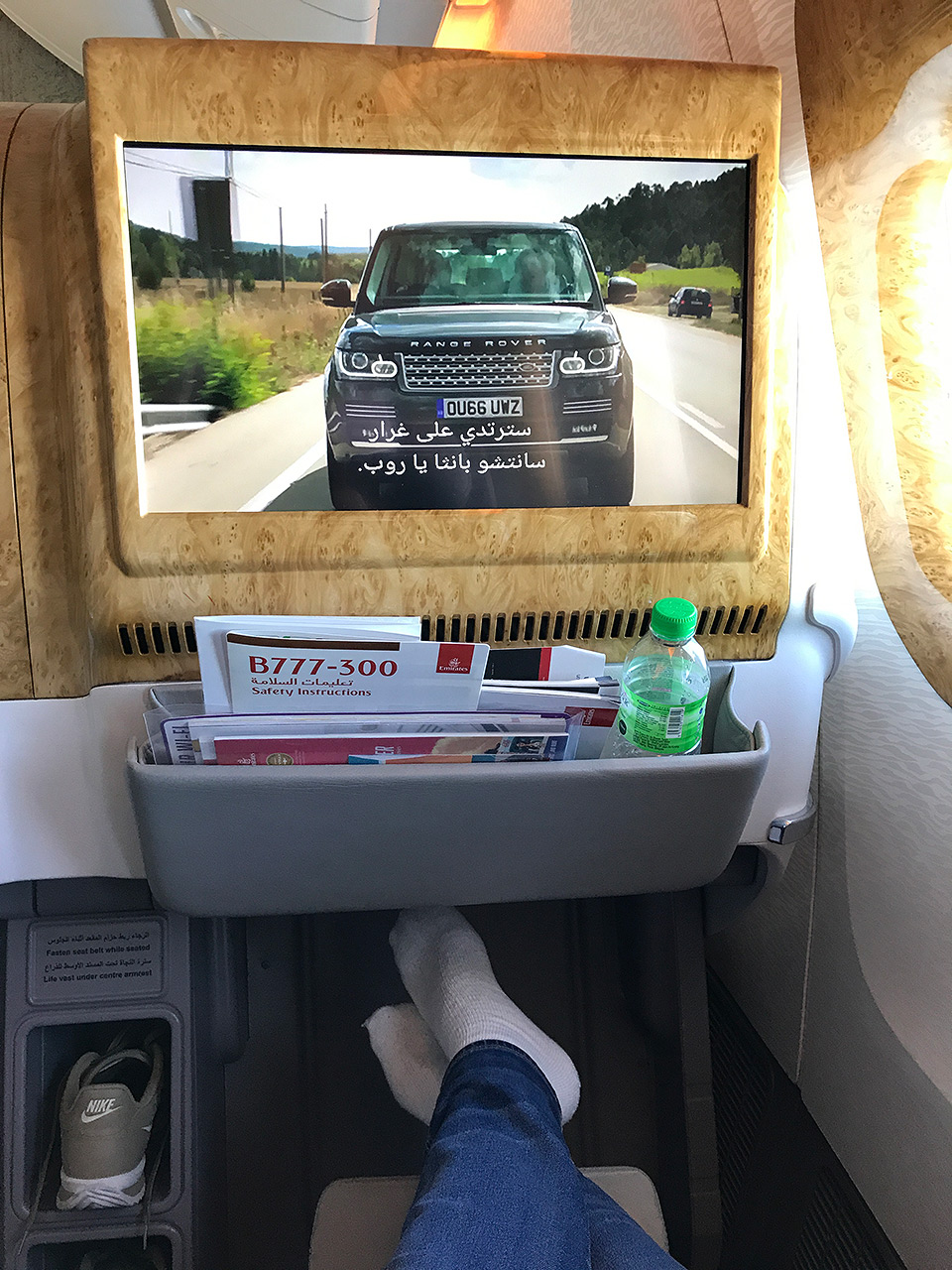
.
Aerial view on the dunes around Dubai.

.
Descending to Dubai International Airport.
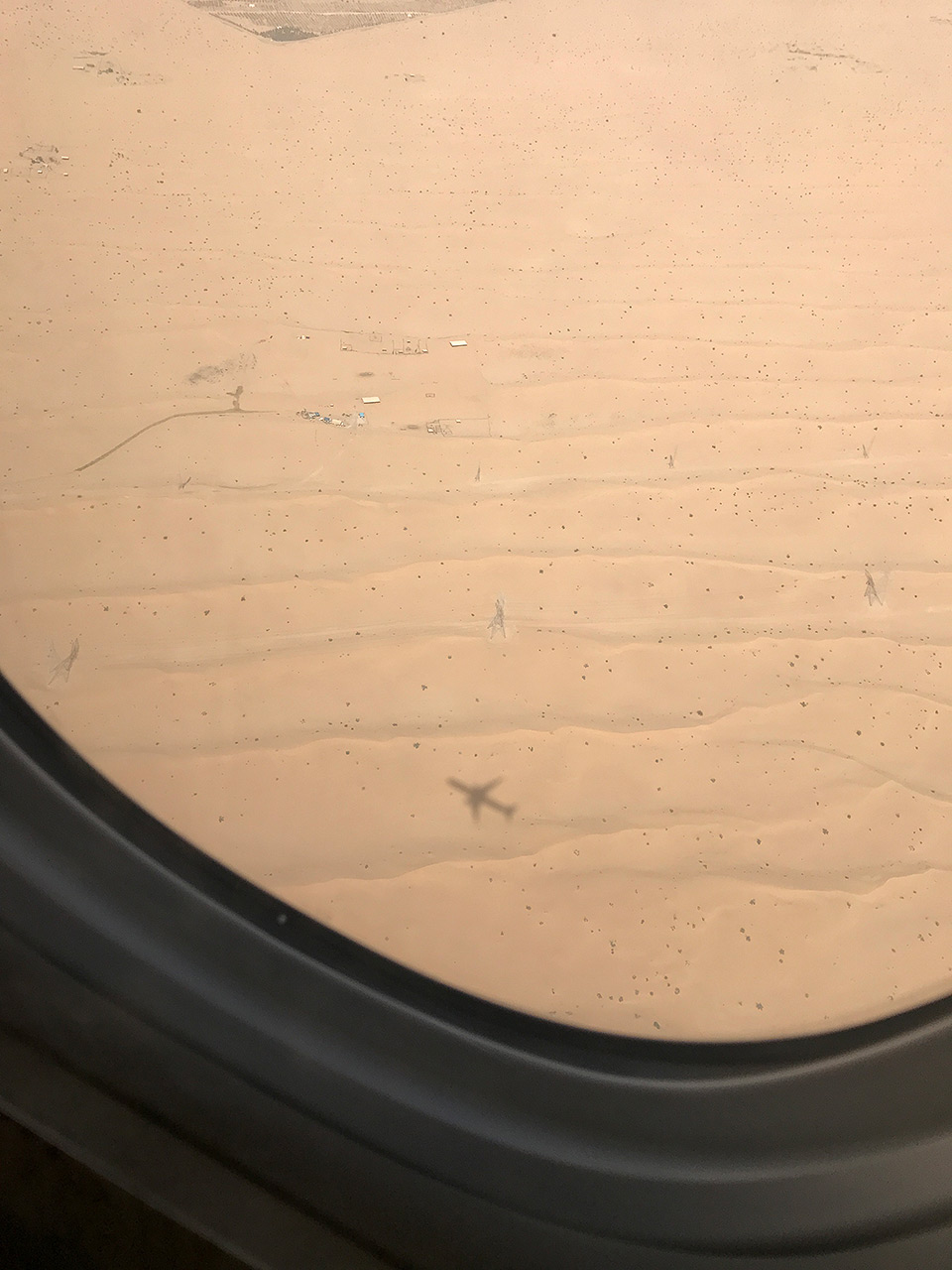
.
Almost there.

.
After a short layover the journey continues on an Airbus A 380-800.

.
Studying the menu and enjoying a glas of Champagne.

.
The Airbus A 380 is basically a space ship.

.
Arrival at London Gatwick Airport.
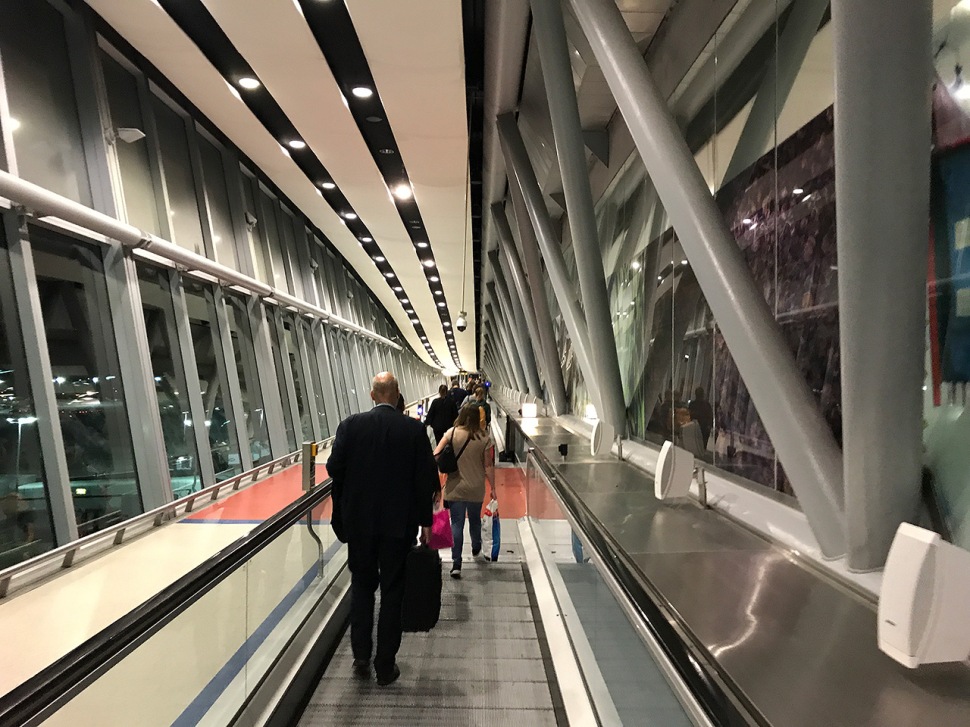
.
The UPVC vessels arrived in perfect condition. After an exhausting 17 hours journey, it is great to have an Emirates Chaffeur waiting at the airport. Next stop, a hotel near London Heathrow Airport, where the journey will continue tomorrow. Good night.
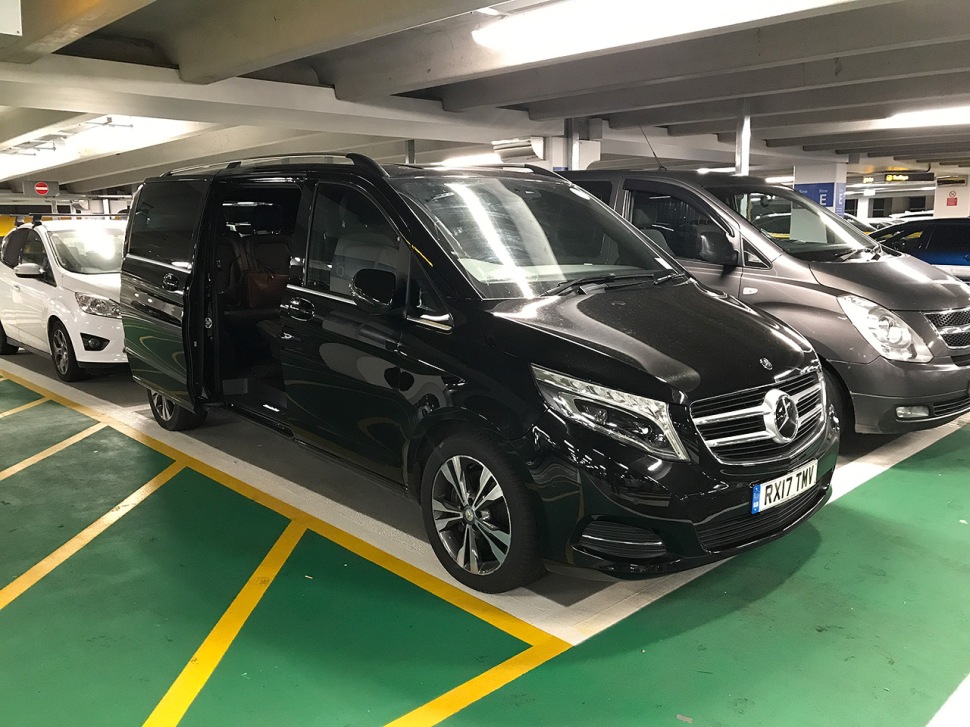
.
Saturday, Oct. 21, 2017
The journey London – Atlanta continues with an Airbus A 340-600 of Virgin Atlantic. No business seat this time. Will I survive the next 8 hours?

.
The usual fight for the armrest 😉
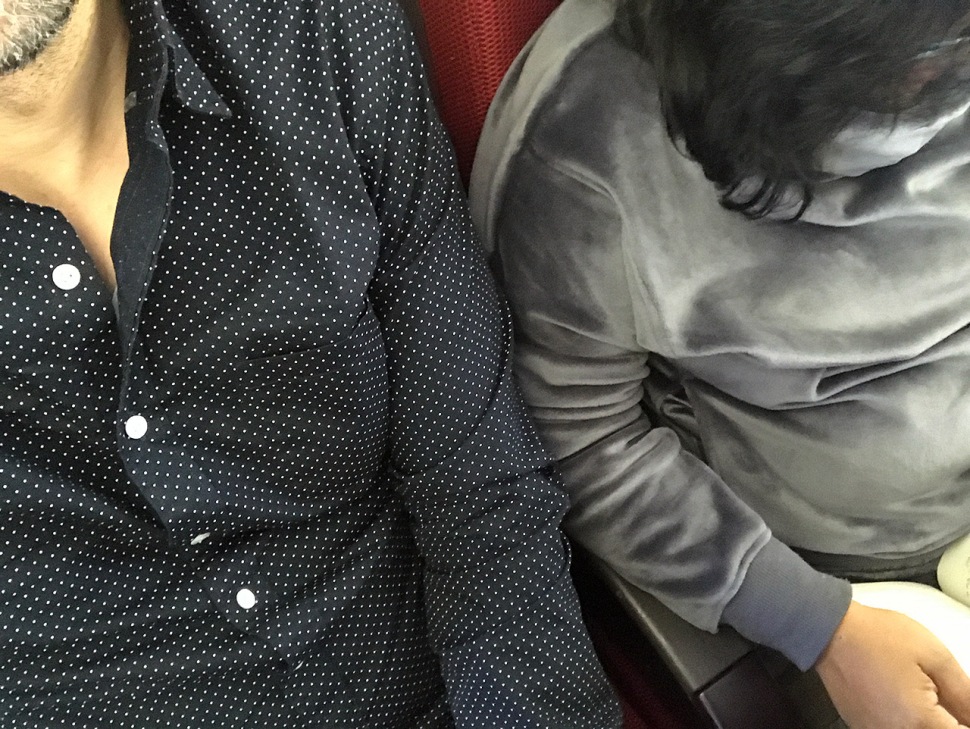
.
Almost there. Was not that bad after all… but, how many time zones did I cross?

.
Long queue at US Immigration. The officer was surprised to find a Cambodian visa in my passport, as he himself has Cambodian roots. After a nice chat and explaining the purpose of my visit to the United States, he was very impressed with my meeting with the “big shot”.
The vessels arrived undamaged. UPVC rocks! It’s the only safe way to send prints around the world.
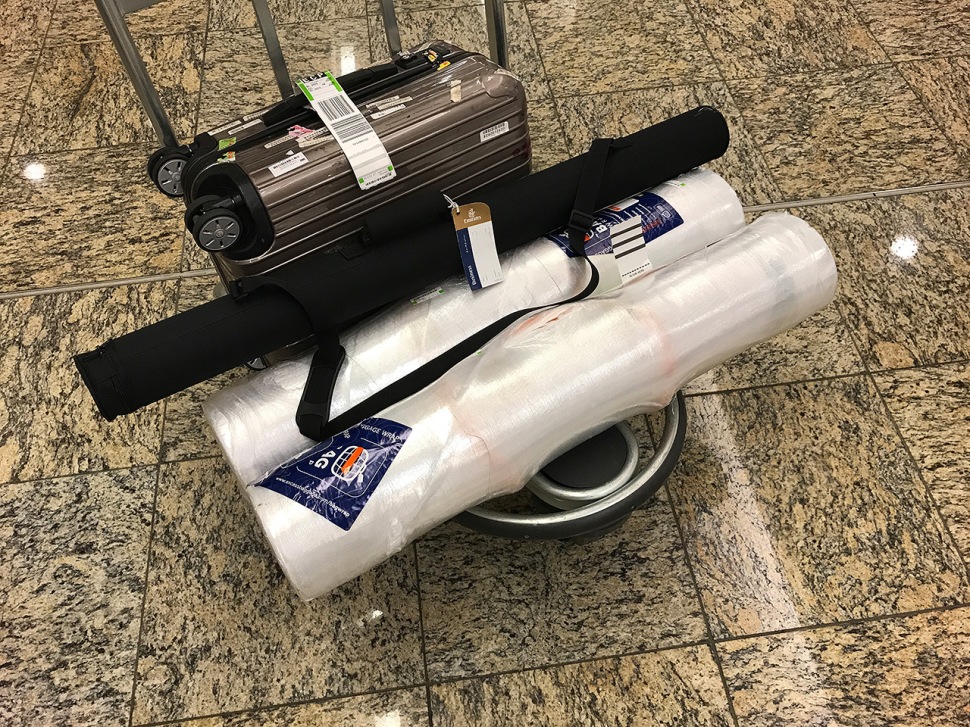
.
After a four hours layover at Atlanta Airport, the final leg to Panama City was flown in a McDonnel Douglas MD-88 operated by Delta Airlines.

.
Finally, arrived in Panama City! The vessels are intact, unlike me. The trip was exhausting and I feel somehow trapped in between time zones.

.
While waiting at the car rental counter, I spotted an interesting “painting” near the exit.

.
A closer look. Yeah, it’s SEALAB 1 from 1964.

.
I was very tired, but there was one more thing that needed to be done before I could happily crash into my bed at the hotel. A 140 miles road trip… to take something very important into custody for tomorrow…
.
Sunday, Oct. 22, 2017
Today was the big day. I was about to meet the legendary US Navy Aquanaut Bob Barth. My crazy road trip last night was all about getting Bob Barth’s Rolex 5512 that he wore during Sealab 1 & 2. When the new owner learned that I was going to see Bob, he offered to sent the watch my way so I could make pictures of it. What a great gesture!
In the morning I saw the watch for the first time in natural light. I was totally blown away by its beauty. The patina of this gilt dial is amazing and gives it an almost purple tint.

.
Bob gave this watch to friend. When his friend passed away, his friend’s widow returned the watch to Bob. The crystal was totally scratched and had some chunks missing. Bob had already bought a new Rolex Sea-Dweller.

.
Bob decided to sell the watch in 2008, totally unaware that watches of this calibre had become highly collectible items.

.
Probably the most beautiful and important watch I ever had on my wrist. I just couldn’t stop looking at it…

.
Anyway, around 7:45 in the morning I called Bob to tell him I was on my way to see him. I drove the 20 miles from my hotel to Bob’s house in 30 minutes. The photo below shows the Hathaway Bridge along US Highway 98, between Panama City beach and Panama City.
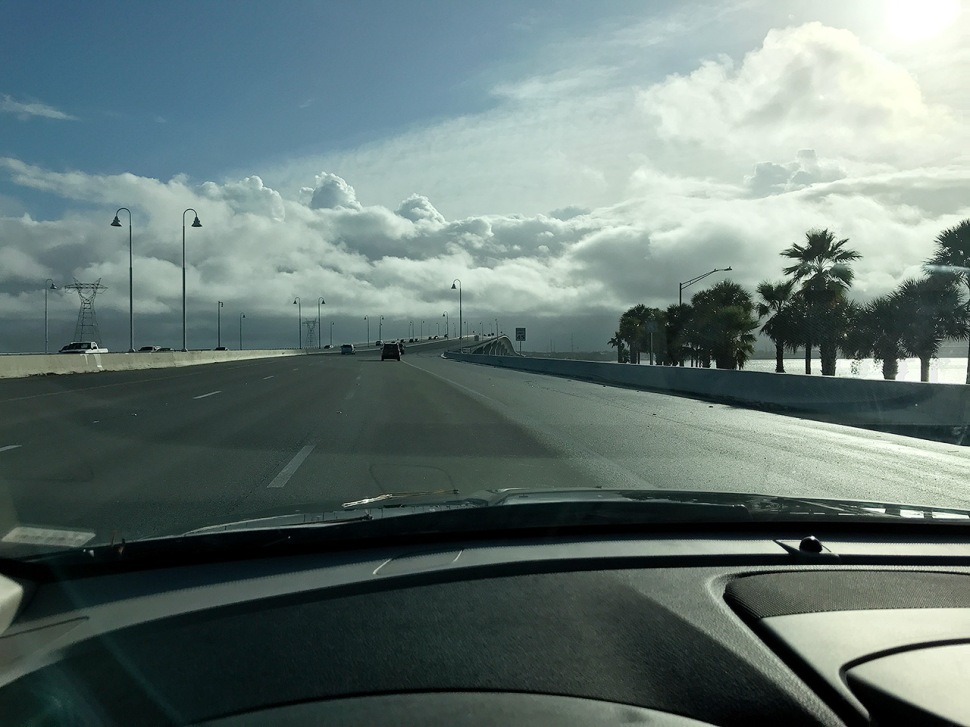
.
Bob and his dog Dora welcomed me at the door. Dora could definitely smell my two Weimaraners.

.
Bob was very nice and relaxed. He is a hands-on guy. I unpacked the prints and Bob started to sign them very carefully, not to damage anything.
On his wrist you can see his Rolex Sea-Dweller, probably the 16600 he bought 15-20 years ago. Bob complained about bad time keeping. Rolex, if you are reading this, please offer Bob a free service for his watch.

.
Bob signed the prints one by one without rushing. Luckily, time was on our side and during the process of signing the prints, Bob told me all kinds of mind blowing stories about his life.
Btw, a part of the print sales will go to Bob. I am sure he can make good use of the money.

.
After an hour an a half it was done. 50 prints were signed. Storing them safely back into their UPVC “habitats” took a long time but it felt very easy. Bob Barth is a man of few words, but if you ask the right questions you get the right answers. He is an endless source of extremely valuable information.
Just look at the mess I made in Bob’s house…

.
During our conversation, I spotted this incredible painting in Bob’s living room. This is actually a technical paiting that was published in a magazine. It belonged to Dr. Bond, the master mind behind the Genesis and Sealb missions. Dr. Bond gave this painting to Bob at some point.

.
There were also photos of the Sealab missions I had never seen before. Here you can see Bob during Sealab 1 in July 1964. He left the habitat through the open hatch without breathing apparatus, just by holding his breath. This photo was taken in 192ft/58m depth off the coast of Bermuda. Simply amazing.

.
The next photo was made by Bob Barth himself, while Sealab 3 was still floating on the surface. Sealab 3 lasted only a few days. Aquanaut Berry L. Cannon tragically died during an attempt to repair a leak in the habitat, basically in Bob Barth’s arms.

.
Name list of Bob Barth’s Sealab shipmates.

.
An award given to Bob by the Aquarius Habitat crew.

.
Bob’s house is full of diving references.
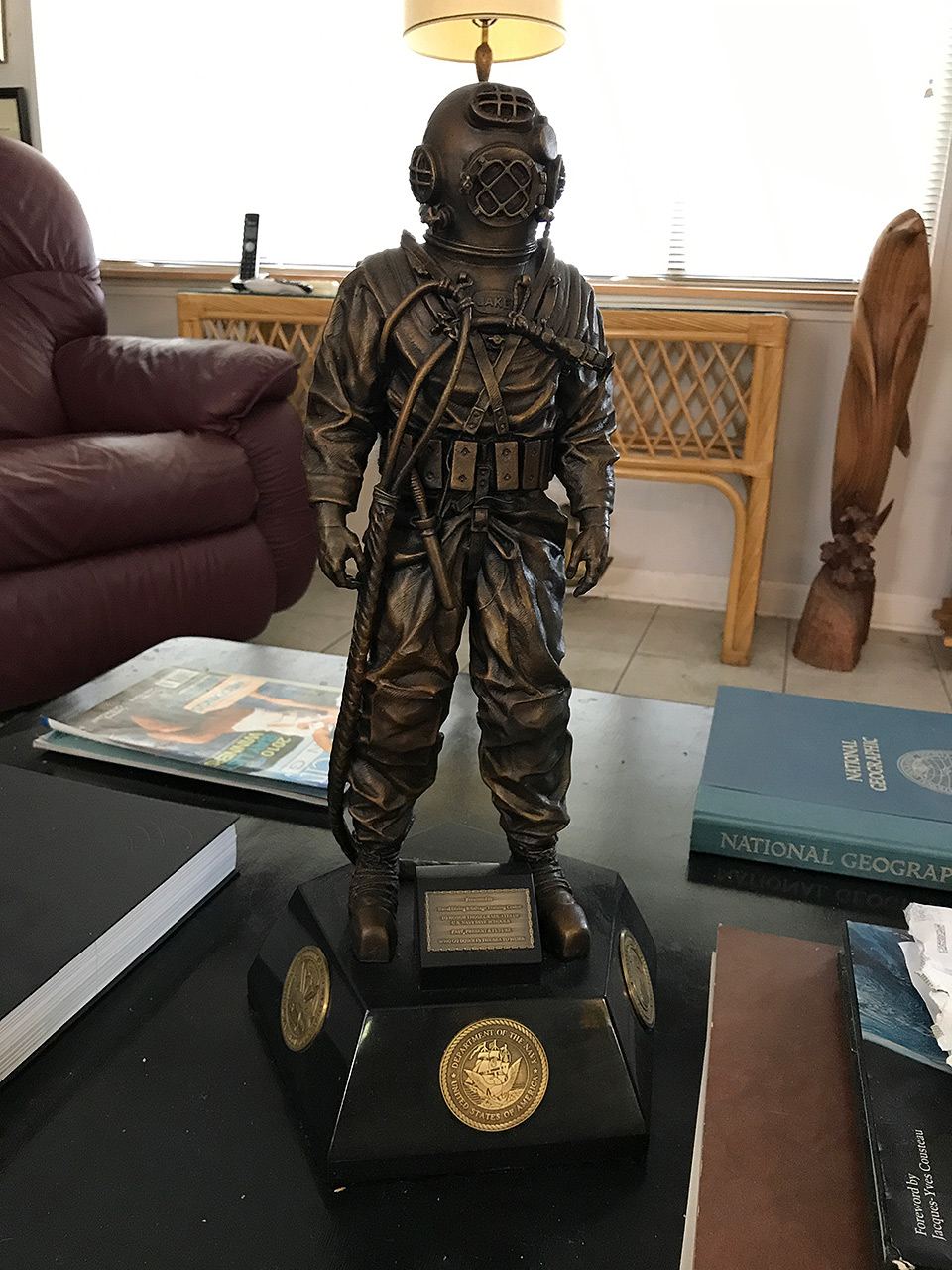
.
In the year 2000, Bob published a book about the Sealab missions with the title “Sea Dwellers”. Bob pointed to his book shelf and asked me to get one of those books.

.
He then signed it for me and wrote a dedication. Few words only, but with a great impact for me. Thank you very much Bob!
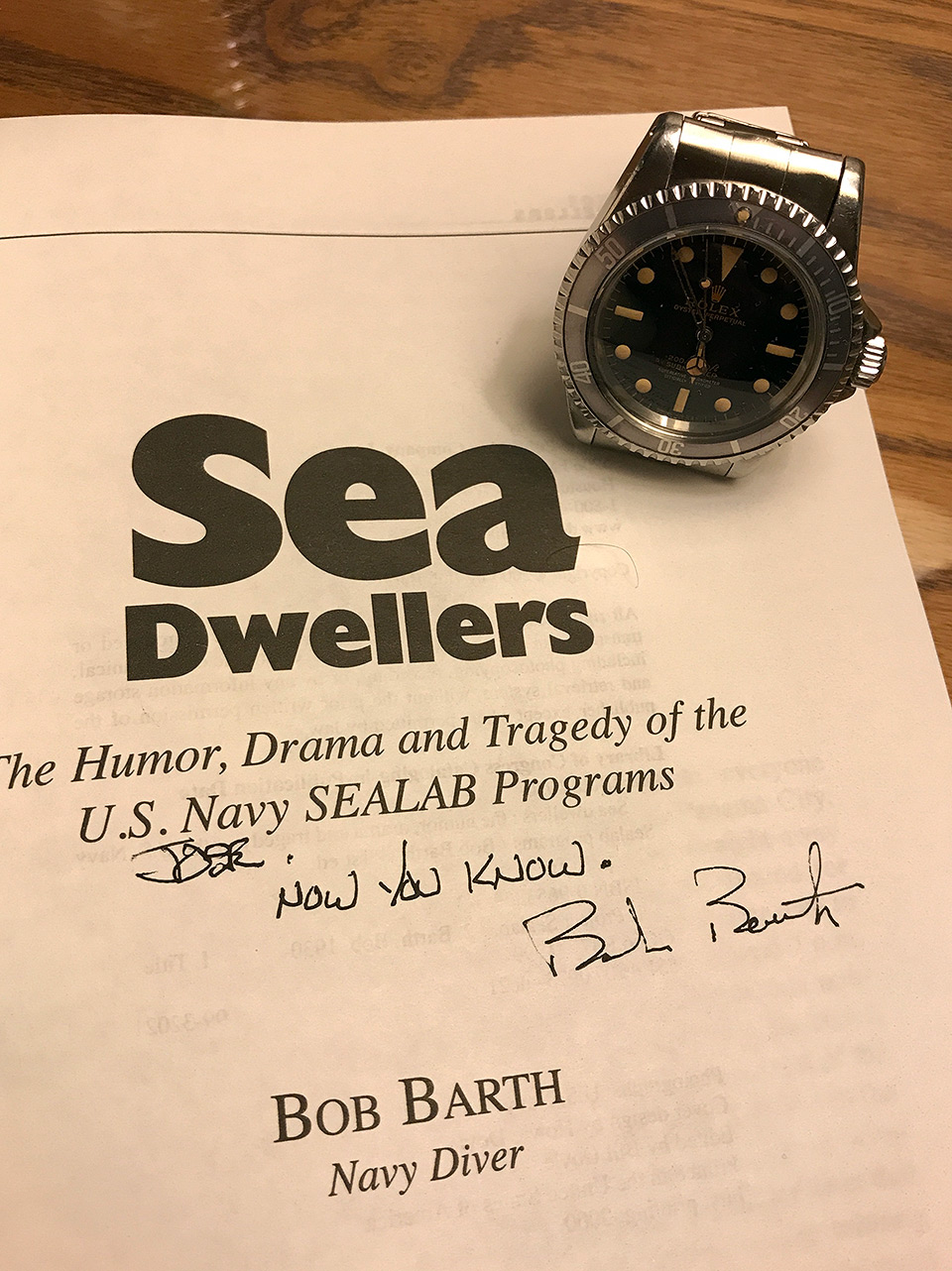
.
Bob was tired and I was extremely hungry. I was so excited to see him in the morning that I totally forgot to have breakfast. Before I left the property, I made this amazing shot of Bob’s watch with his name sign as a background.

.
Thank you very much Bob for this amazing day! It was a great privilege and honour to meet a man of your calibre.
Tomorrow I will visit Bob again for a video interview. Later in the afternoon, I will receive a guided tour at the Sealab museum form Jim McCarthy, the Sealab 3 engineer. Looking forward.
.
Monday, Oct. 23, 2017
Early in the morning, I drove up north to meet Bob again at his house. During the signing process the day before, Bob told me all kinds of fascinating things which had to be recorded on video.

.
Bob arranged a “Man in the Sea Museum” tour for me with Jim McCarthy, Sealab 3 engineer. I met Jim at 2:00 pm at the museum.
The photo below shows a Personnel Transfer Capsule (PTC) Mk 2 from 1972 outside the museum. This type of capsule was used to transport pressurized divers to and from the working depth.

.
The next photo shows the Mark 1 Deep Dive System (DDS) built in 1968. This is a surface habitat for divers returning from great depths. The capsule on top is the Personnel Transfer Capsule (PTC) to lower the divers to their working depth and bring them back to the surface.

.
What a spectacular thing.

.
The restored Sealab 1 habitat. After the successful experiment, which unfortunately had to be aborted after 11 days due to an approaching hurricane, this habitat was lifted from the ocean floor off the coast of Bermuda in July 1964.

.
The US Navy sunk the habitat later near the Naval base in Panama City and used it for many years to test all kinds of stuff.
The photo below shows the moment the habitat was salvaged for the museum. A bridge on the way to the museum forced the salvage team to cut off the legs in order to transport it to the museum. The legs were later re-welded.

.
Inside the restored Sealab 1 habitat. I took the opportunity to make a few pictures while Jim McCarthy was on the phone. The bunk beds for the crew were located in the back of the habitat. Shower and toilet were located on the opposite side.

.
This is were the crew prepared their meals. The stove was electrical.

.
The small dining table is located in the center of the habitat.

.
The open hatch. This is where the Aquanauts would go in and out of the habitat. Since the habitat was under pressure, the water could not enter.

.
Sealab 1 was lowered to the ocean floor at a depth of 192 ft/58 m, off the coast of Bermuda, right beside an US Navy research tower named “Argus Island”. This four-legged plattform was part of Project Artemis, an accustic research program to detect approaching submarines at long range with a low-frequncy active sonar system. Argus Island was equipped with generators and provided all the energy needed fot Sealab 1.
The photo below shows Dr. George F. Bond, commander of Sealab 1, talking to a navy officer in fornt of Argus Island.
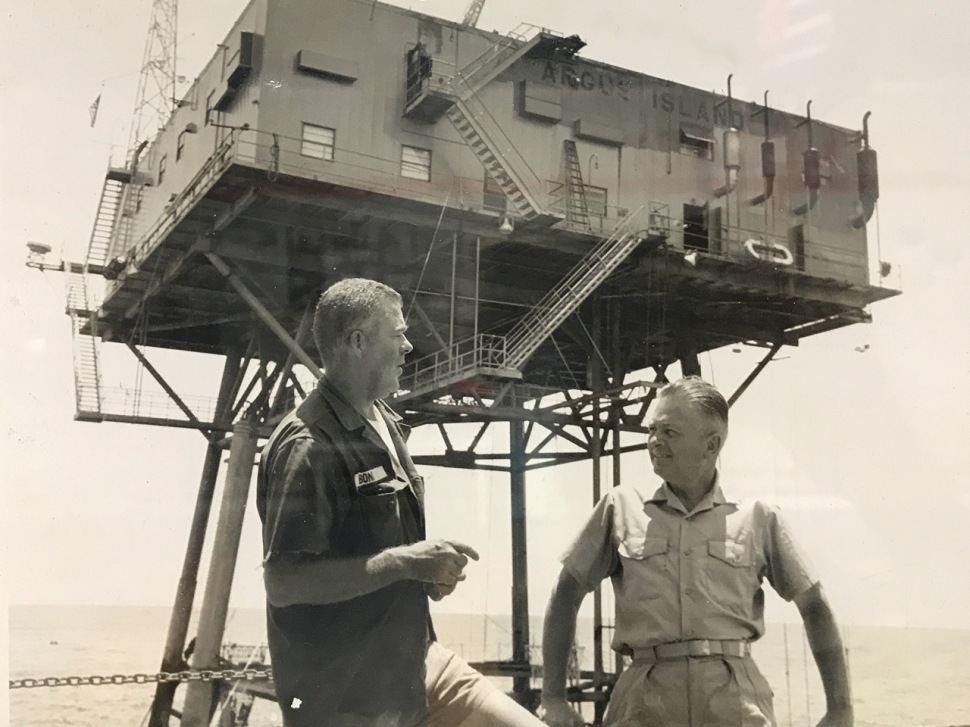
.
Due to an approaching Hurricane, Sealab 1 had to be aborted after 11 days. The original plan was to lift the habitat by crane from the ocean floor while slowly decompressing the divers (1 foot/20 minutes).
However, the churning sea caused the habitat to dangerously rock back and forth. The Aquanauts transferred at 84 feet from the habitat to a small emergency decompression chamber and were brought to the surface within minutes.
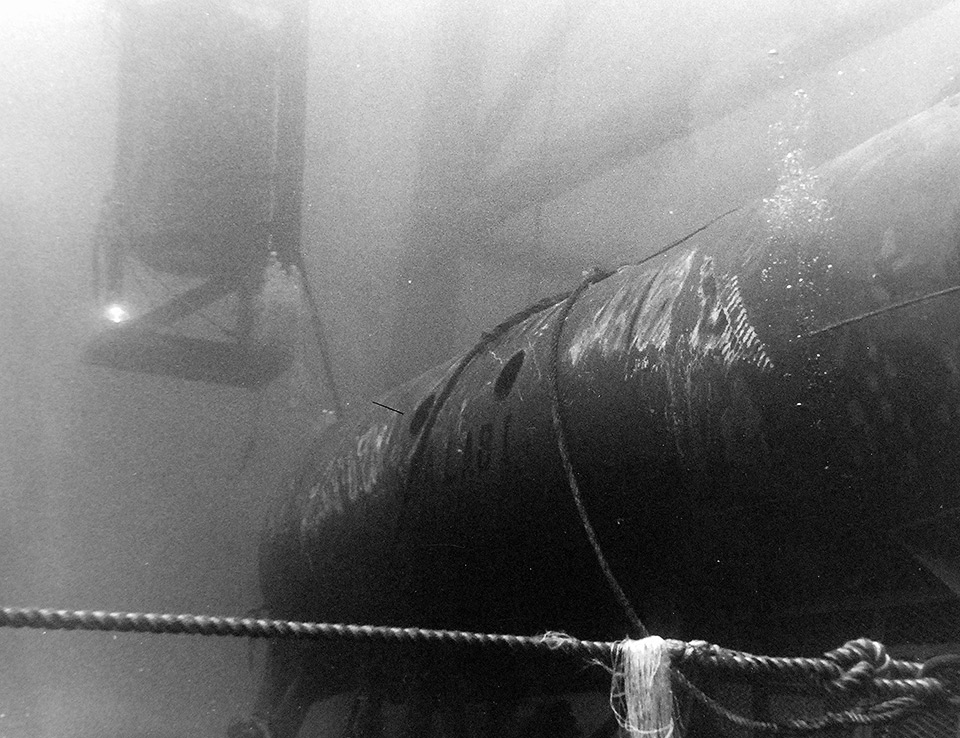
The emergency decompression chamber was then rotated 90 degress to offer better comfort to the Aquanauts during the decompression process.

.
Bob Barth and the rest of the Aquanats during an interview with the press.

.
The photo below shows the Helium Voice Unscrambler used by Dr. George F. Bond on the surface. Since the Aquanauts were breathing helium, they sounded like Donald Duck and it was almost impossible to understand what they were saying.

.
Dr. George F. Bond, aka Papa Topside, gave a speech about the concept of saturation diving at a meeting of the Boston Sea Rover in 1957. During this event, Bond met Jacques Cousteau, the french ocean explorer. This event would mark the beginning of a wonderful frindship. The Sealab team was in constant contact with Jacques Cousteau and his team. The cooperation between the teams was very close and Jacques Cousteau even contributed to the Sealab 2 habitat with his own ideas.
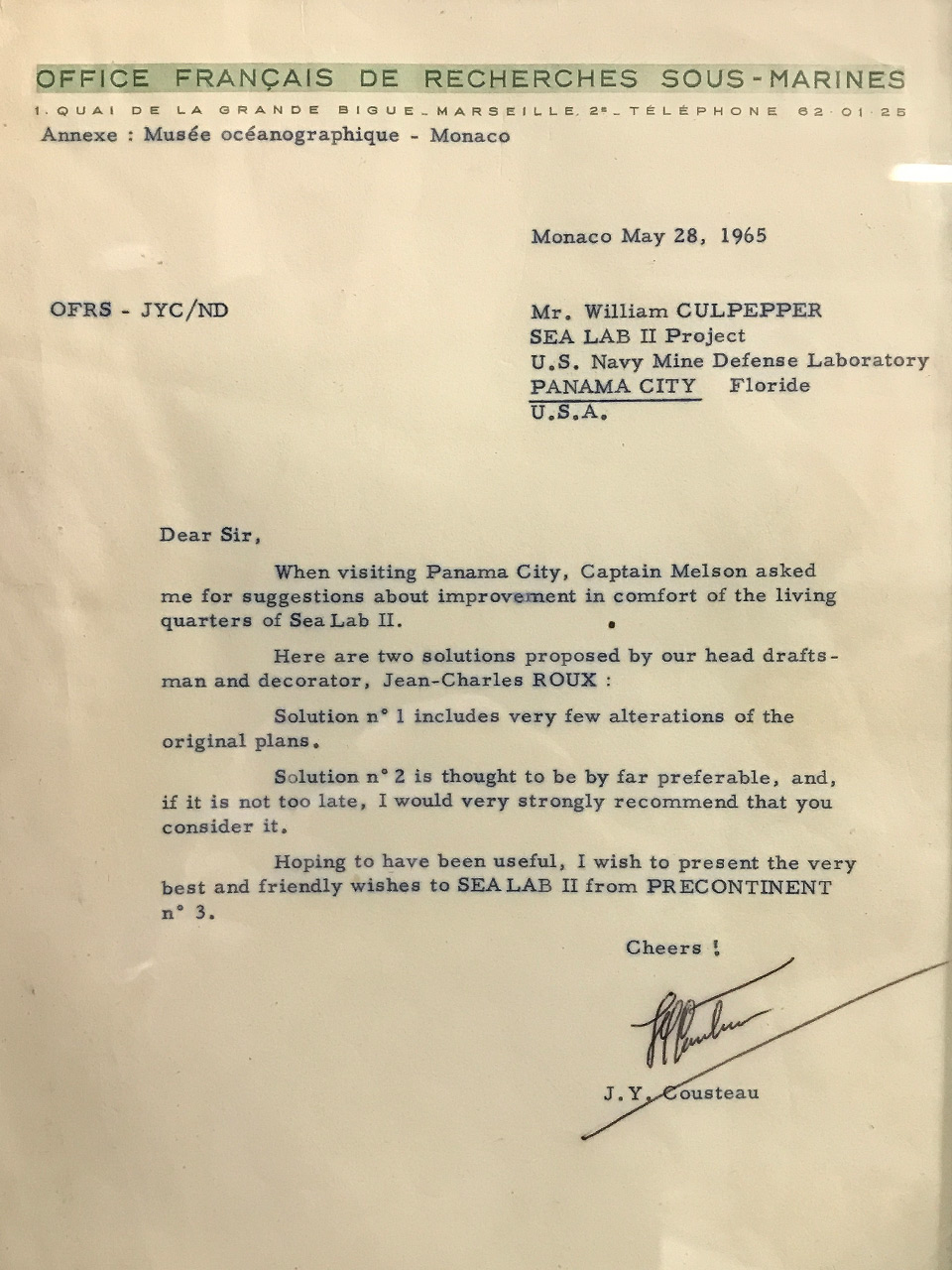
.
Bob barth and other divers on a boat during Sealab 2.

.
Sealab 2 was lowered onto an uneven bottom (205 ft/62 m) in the La Jolla Canyon off the coast of California. The habitat had a six-degree tilt at the bow and was canted slightly to port. The first team of Aquanauts around Scott Carpenter named the habitat “Tiltin Hilton”.

.
Fantastic Sealab stamp on a decompression schedule developed by Dr. George F. Bond for Sealab 2.

.
The next picture shows a very detailed illustration of Sealab 3. In February 1969, Sealab 3 was lowered to an incredible depth of 610 ft/185 m. The many cylinders on the left side of the habitat were storage racks for the long umbillical cables (breathing gas hose).
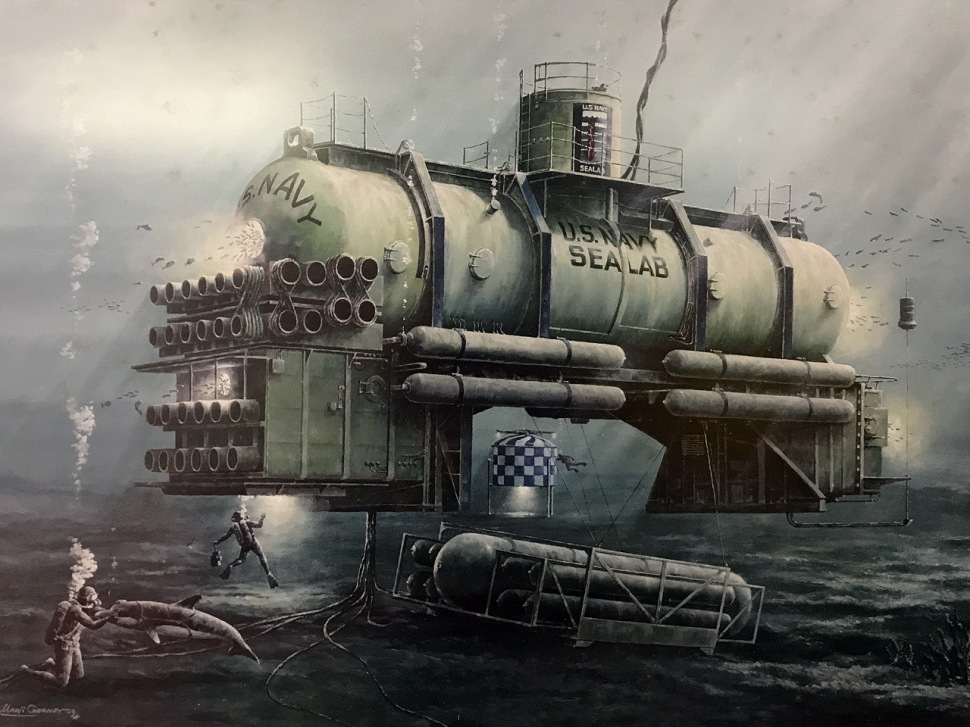
.
“Bailout” system for Sealab 3. The Aquanauts were equipped with an emergency rebreather, a system that recycled and cleaned exhaled gases, in case they would been cut-off from the umbillical cable. This system provided enough breathing gas to reach the habitat or the Personnel Transfer Capsule (PTC).
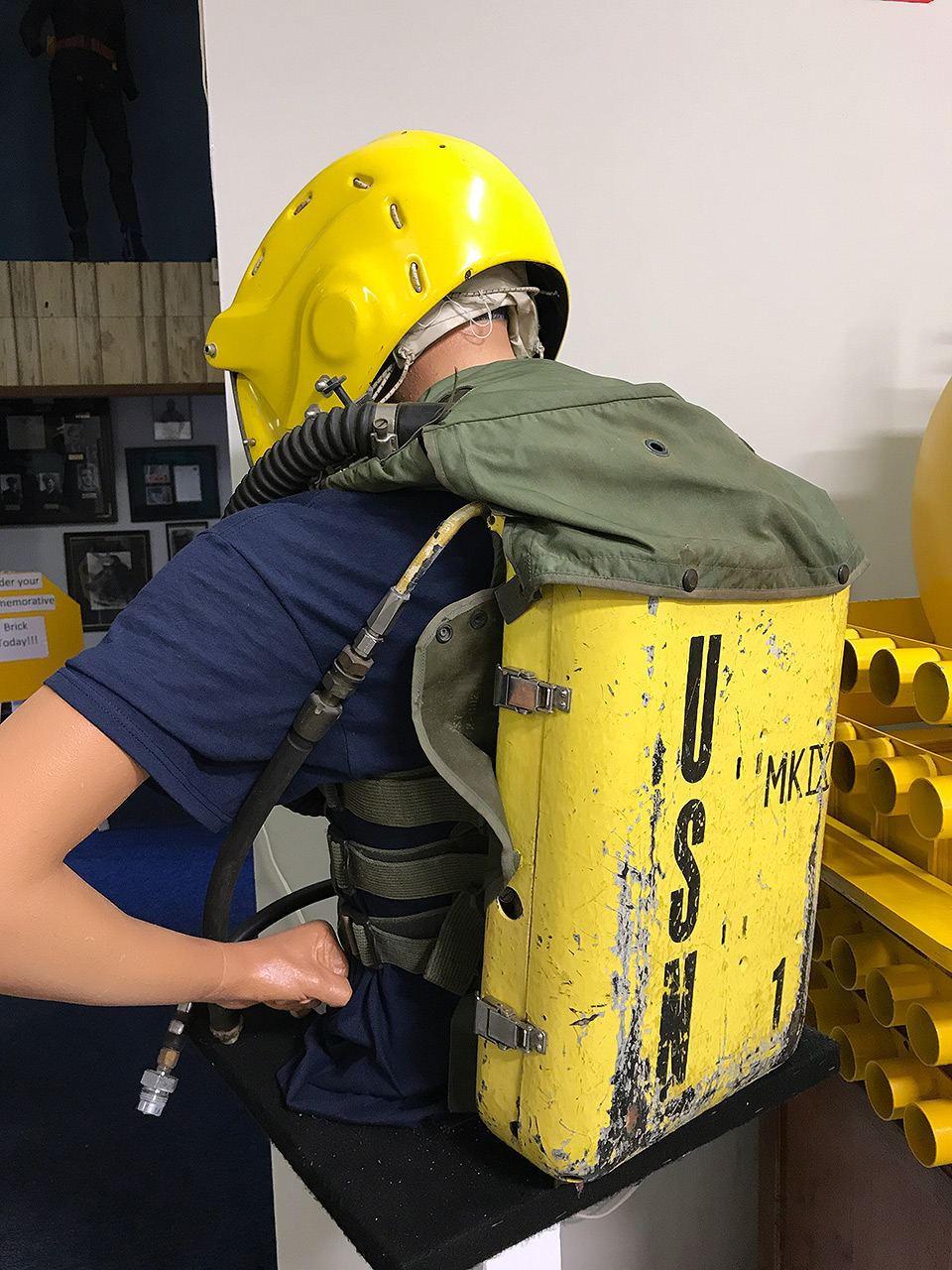
.
Personnel Transfer Capsule for Sealab 3. Due to the great depth, the Aquanauts of Sealab 3 could not descent to the habitat on their own, unlike during Sealab 1 & 2. The divers were pressurized to 100 fathoms on the support vessel and lowered to the habitat with the PTC.
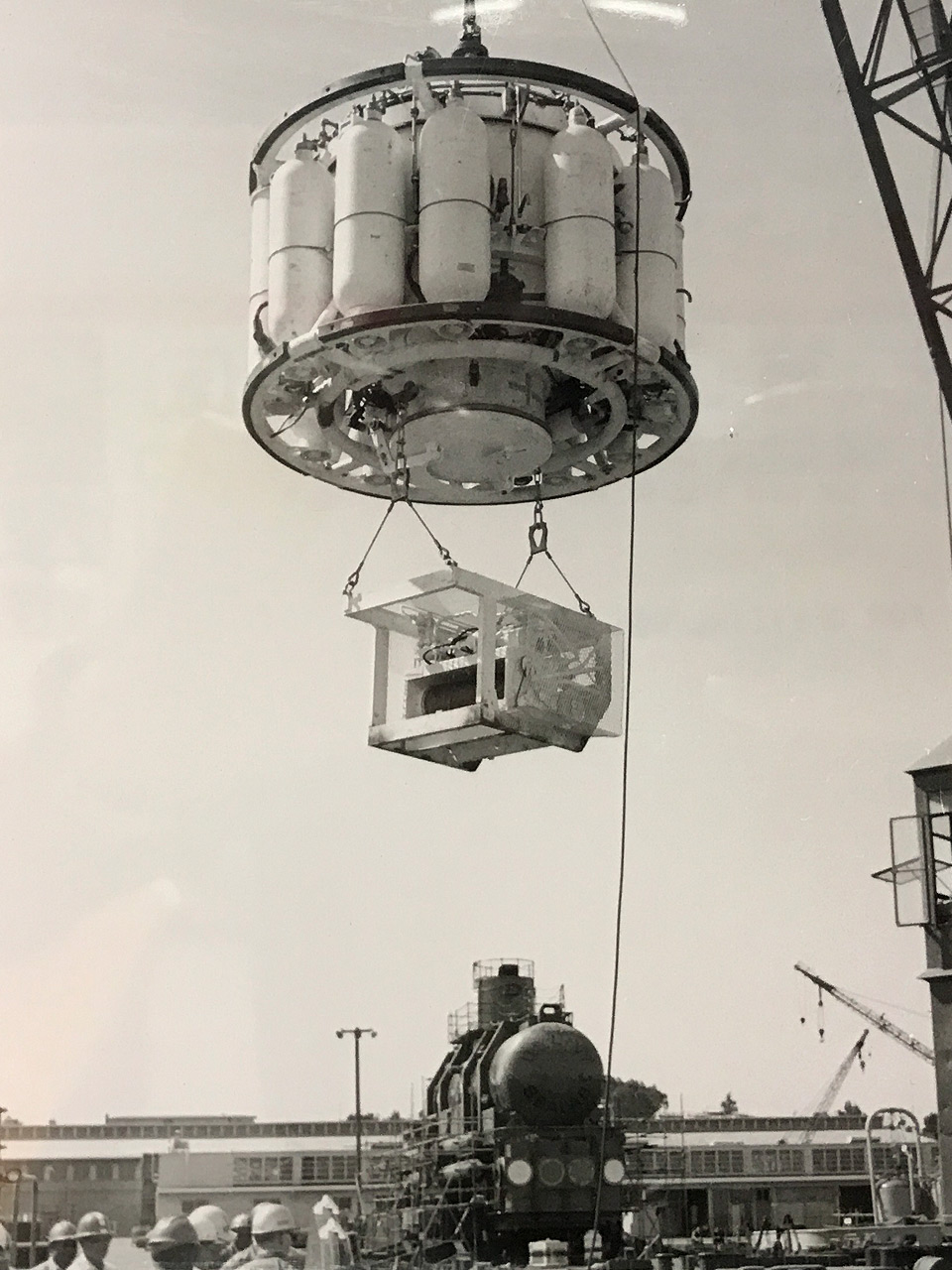
.
Sealab 3 mask.

.
A different mask model for Sealab 3.
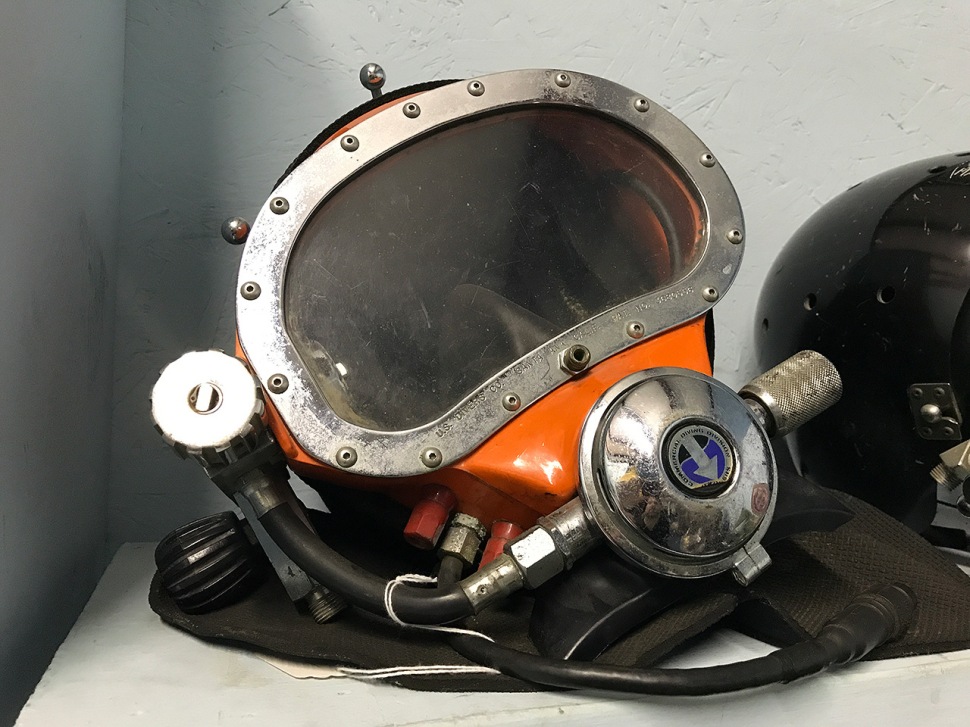
.
Jim McCarthy developed a huge Ocean Simulation Facility (OFS) that is located at the Naval base in Panama City. The photo below shows Dr. George F. Bond inspecting the chamber.
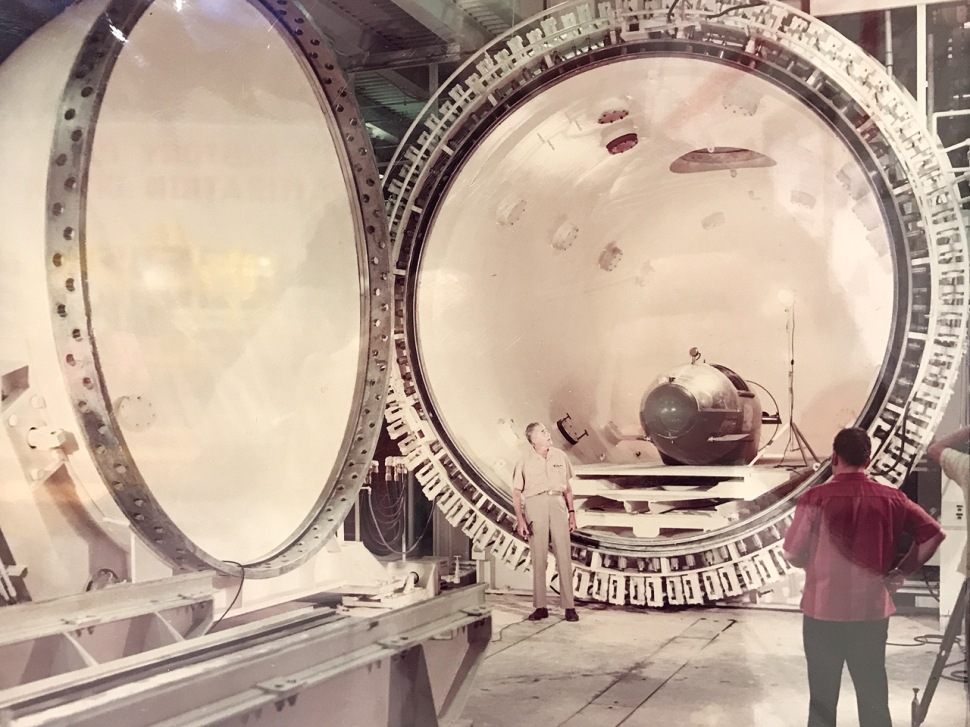
.
Mockup of the OFS. The lower section is three stories tall and can hold 55,000 gallons of water. This enormous pressure chamber is capable of mimmicking oceans conditions up to 2,250 ft/690 m. The dry component atop is separated into five sections that are accessible for working and living.

.
The photos shown in the museum are simply amazing. This is Bob Barth with a Aqualung breathing apparatus. Looks like the guys had lots of fun during their service.

.
Another great shot of Bob Barth, Chief Quartermaster of the Sealab program.
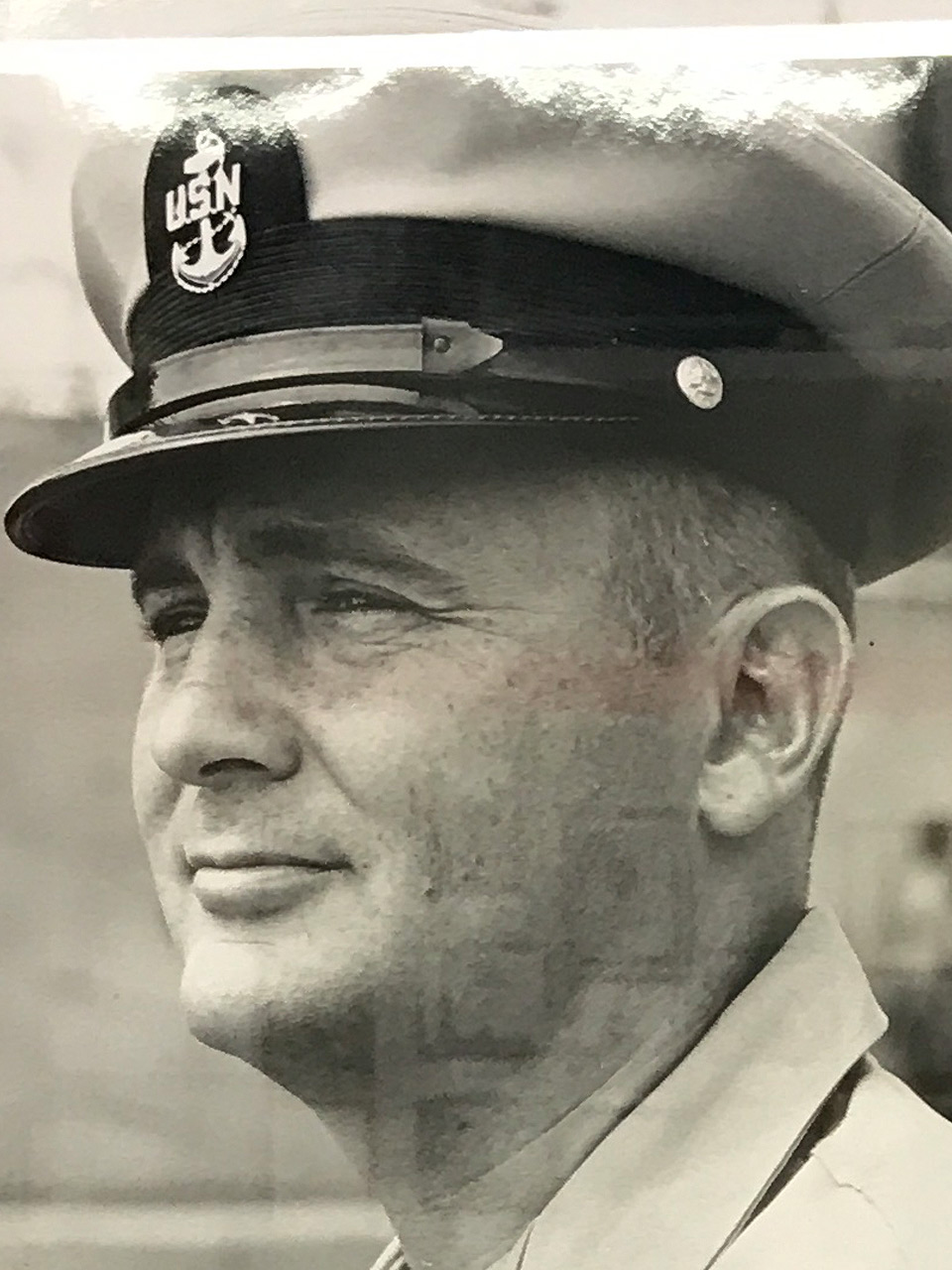
.
No. 44/50 of the limited edition Sea-Dweller timeline will soon be a part of the Man in the Sea exhibition. Very proud!

.
Presenting the timeline to Jim McCarthy.

.
Oxygen container on the outside of the Personnel Transfer Capsule. Now it was time to see the PTC from inside.

.
Before entering the capsule, Jim’s very own Rolex Double Red Sea-Dweller (Mk2) materialised right in front of my eyes. The next photo shows Jim’s DRSD together with Bob Barth’s 5512. The whole weight of diving history can literally be felt on the wrist.
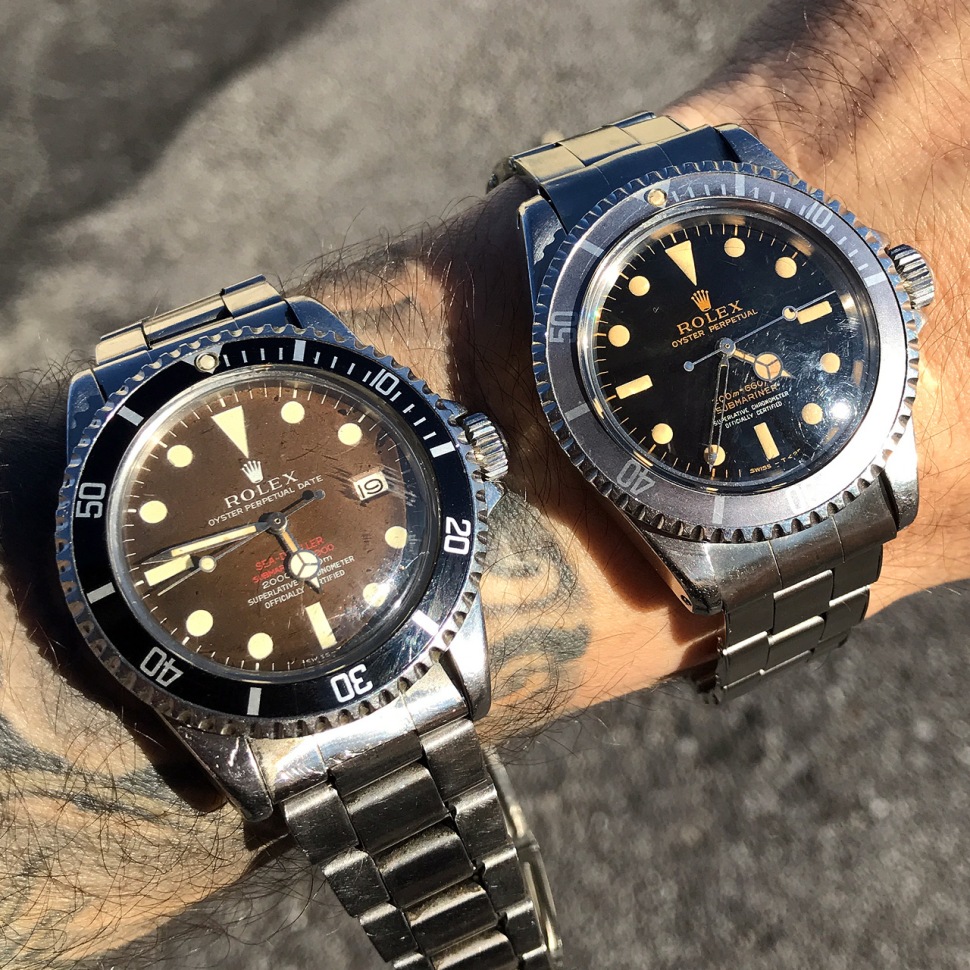
.
Inside the PTC.
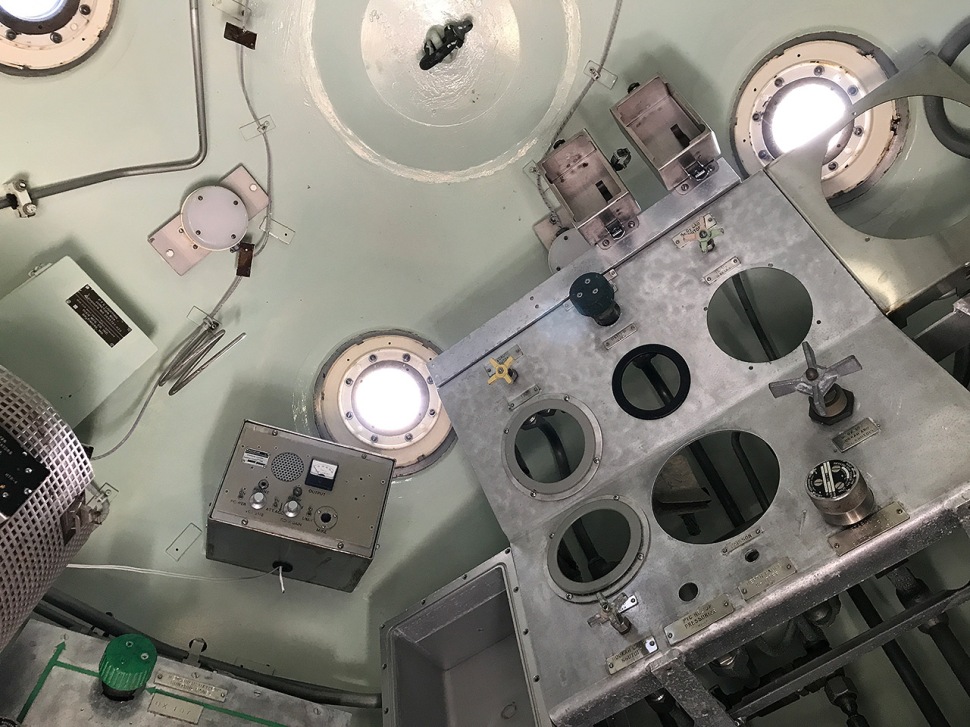
.
Jim’ and Bob’s watches together with an US Navy tag inside for PTC.
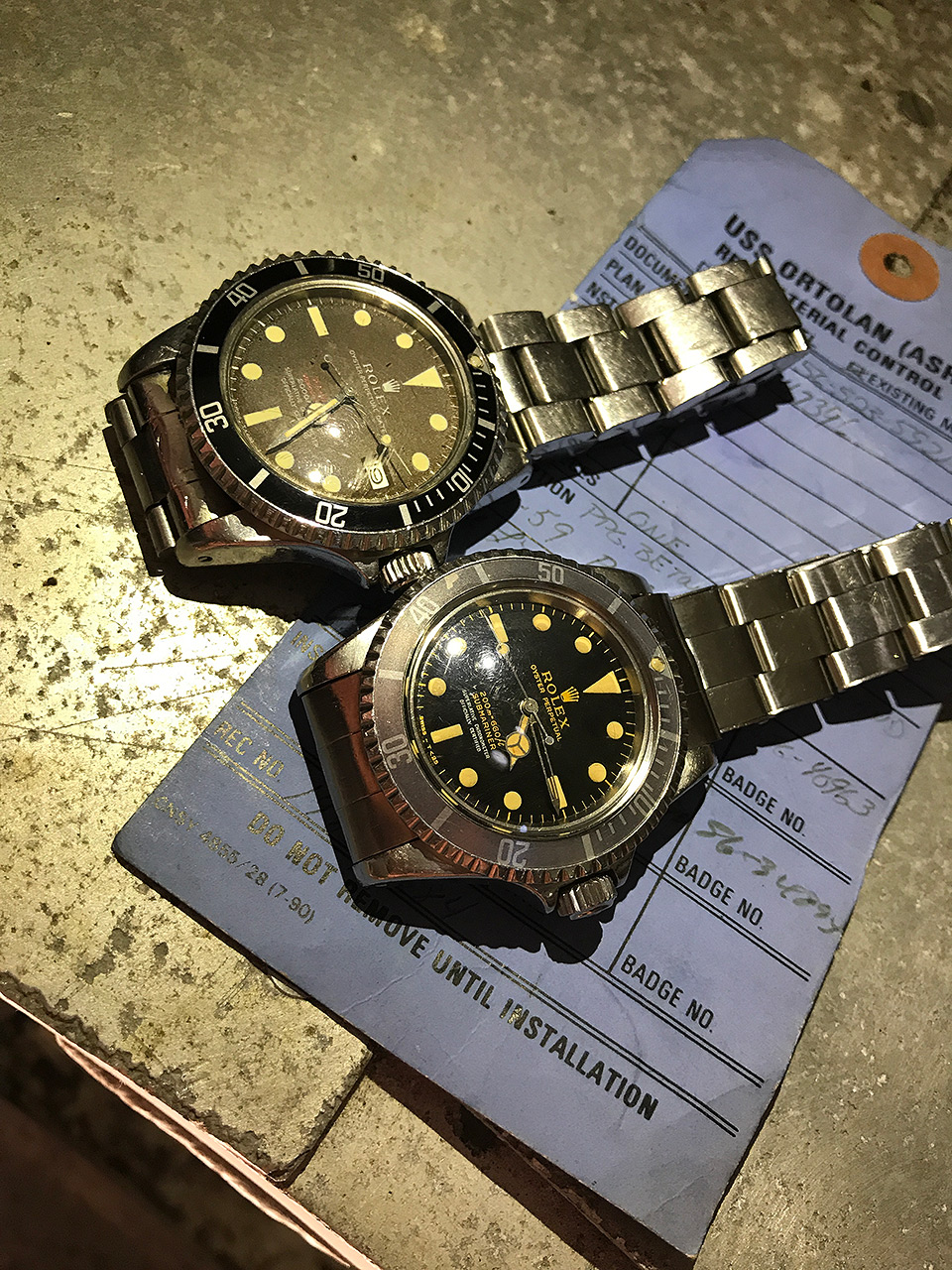
.
Another shot inside the PTC.

.
Heliox gauge compartment.

.
Another interesting watch was pulled out while we were chatting outside the museum. This watch belongs to Sealab engineer Bill Culpepper. Culpepper was inspecting the Sealab 2 habitat when all of a sudden Bob Barth passed by. Bob spotted the “old” Omega Seamaster 300 on Bill’s wrist and asked: They didn’t give you a new watch? Not yet, Bill replied. Bob took off his Doxa and threw it at Bill. Bill caught it on the fly and kept it ever since. The Doxa has a serial number from 1966 (6668XXX).

.
It is unknown when Culpepper got the watch from Bob Barth. The Sealab program was an ongoing project and the team was constantly improving their habitat and gear.
What an amazing afternoon! Roscoe Smith (left), Jim McCarthy (center) and I had great conversations in and outside the museum.

.
With Jim McCarthy and his DRSD.

.
Now it was time to say good bye. Thank you very much Jim and Roscoe, I had a blast.
As next, I went to a hardware store to buy a few UPVC tubes for shipping the limited edition timelines destined for the USA. When the handyman at the hotel saw me coming, he said: “Ah PVC, the good stuff!”
.
Wednesday, Oct. 24, 2017
Last day in Panama City. I woke up early to this beautiful dawn.

.
While I was preparing the signed posters that were to be shipped within USA, I received a message from a great buddy and Rolex Sea-Dweller collector whether it would be possible to get a signed copy of Bob Barth’s book “Sea-Dwellers”. This was a great excuse for me to go and see Bob Barth again. The route to the airport wasn’t much longer either. I called Bob and he said, sure no problem.
My flight was scheduled for 2:52 pm. I made sure there was an UPS Store on the way to Bob’s. The guys at the UPS Store were impressed with the UPVC tubes. Not even the drivers can bend this, one said.
Afer a small breakfast I went straight to Bob’s. His dog “Dora” welcomed me at the gate. Bob’s wife was outside the house too and we had a nice chat. Bob had his book ready, wrote a personal dedication and signed it. Here we go Chris, I hope you like it.
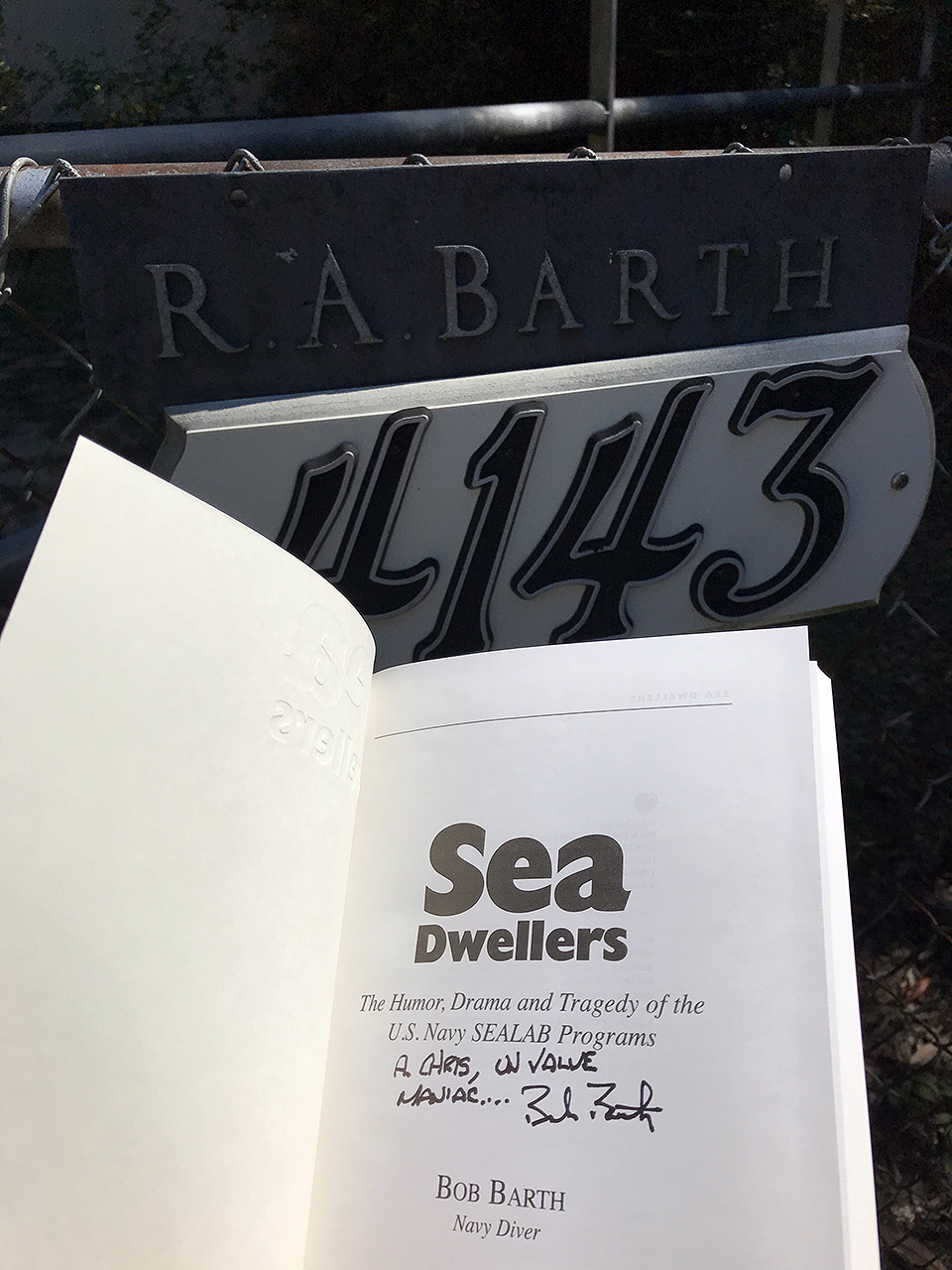
.
Bye bye Panama City. I hope to see you again.

.
Leaving Atlanta…

.
Arrived at London Heathrow Airport the next morning. The vessels were intact but the bloody airline left my suitcase in Atlanta. Luckily, I planned to stay a few days in London with friends and they could help me out.

.
After London, I will fly to Barcelona for a few days to visit my parents. My suitcase arrived the next day. All good!

Your stories, the emotions and the extra mile that you go for your reseach and recovery of such valuable history pieces could make a grown man cry. Thank you for your efforts within the Rolex and Panerai dive worlds and stay safe and healthy for many more stories and projects to unfold. Safe travels.
LikeLiked by 1 person
Thank you so much Mark, it is much appreciated!
LikeLike
Jose,
Wish I would have known you were coming to Panama City Beach, I’m walking distance from the Bay Point Sheraton. Maybe next time..Loved reading the story!!
LikeLike
What a great article Jose, thank you for the in-depth interviews and documenting each step of your journey. That double-red was pretty special.
LikeLike
I had known Bob Barth for close to 30 years, Igor to visit him 3 times in March 2020 before he passed. He will be missed dearly, if you make it back to PC look me up, I am trying to help keep Bob’s life and History alive, I help run The Man In Yhe Sea Museum. JR Fowler 850-829-8271
LikeLike
My Father was a hell of a man.
LikeLike
For your information. Bob. Barth passed away March 26 2020.
JR Fowler
LikeLike